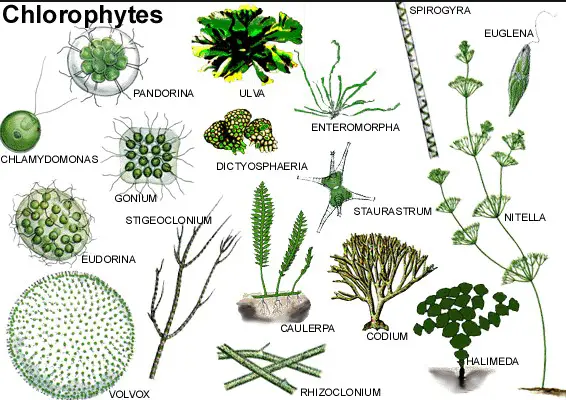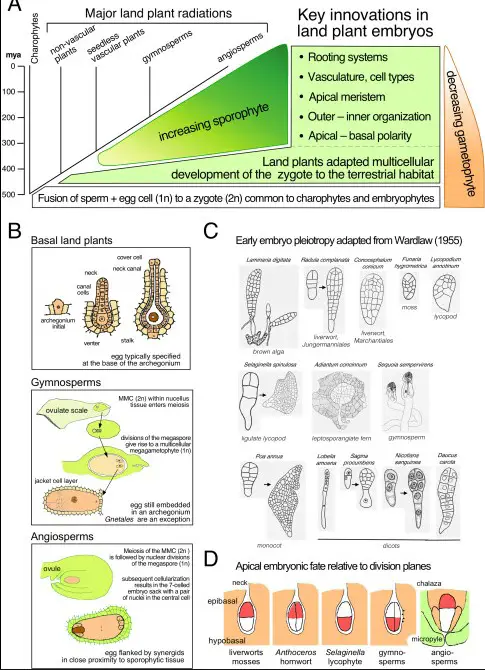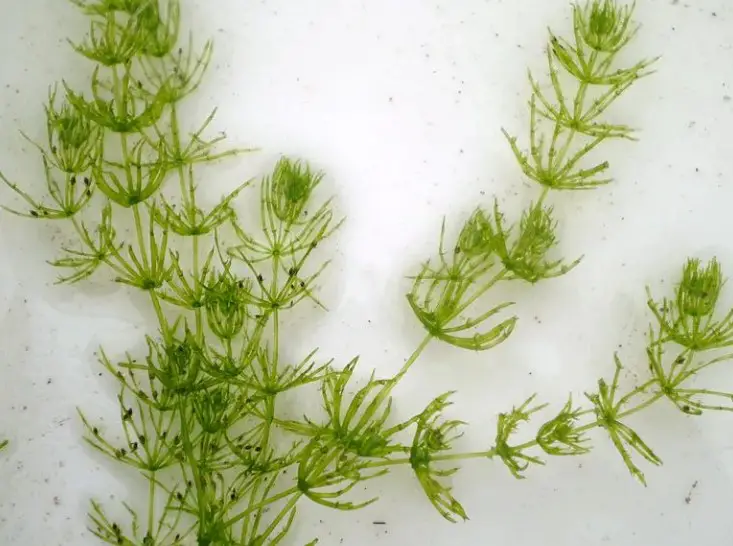Algae play a pivotal role in aquatic ecosystems, contributing significantly to oxygen production and serving as a primary food source for numerous marine species. Among the vast diversity of algae, Chlorophyta and Charophyta stand out for their unique characteristics and ecological importance. These two groups, while similar in being green algae, have distinct traits that set them apart from each other and from other algal groups.
Chlorophyta, often known as green algae, are primarily found in freshwater environments and possess a wide variety of forms, from single-celled organisms to complex multicellular structures. Charophyta, on the other hand, include algae that are more closely related to land plants, showcasing a complex life cycle and structural sophistication. The key difference between Chlorophyta and Charophyta lies in their cellular structure, reproductive strategies, and genetic makeup, highlighting their evolutionary divergence and unique adaptations.
Delving into Chlorophyta and Charophyta, we uncover their vital roles in environmental sustainability and economic sectors. Chlorophyta are instrumental in producing oxygen and serving as a base for aquatic food webs, while Charophyta contribute to carbon fixation and provide habitats for aquatic life. Understanding these differences not only enriches our knowledge of algal biodiversity but also emphasizes the importance of algae in maintaining ecological balance and supporting human industries.

Green Algae Basics
Green algae, comprising the vast groups of Chlorophyta and Charophyta, are pivotal to our understanding of life’s evolution from aquatic to terrestrial realms. These organisms exhibit a remarkable diversity in form and function, serving as the foundational blocks of many aquatic ecosystems. Their ecological roles extend beyond mere oxygen production, playing crucial parts in carbon cycling, habitat formation, and as a key source of nutrition in aquatic food webs.
Chlorophyta Overview
Key Characteristics
Chlorophyta, commonly referred to as green algae, are distinguished by their vibrant green color, attributed to the dominance of chlorophylls a and b. These algae encompass a wide range of forms, from unicellular to multicellular organisms, including both microscopic and macroscopic sizes. Chlorophyta are characterized by their ability to store energy in the form of starch, their cell walls composed of cellulose, and their reproduction strategies, which can be both sexual and asexual.
Habitat and Distribution
Chlorophyta thrive in a variety of habitats, ranging from freshwater lakes and ponds to marine environments. Some species are also found on land, in moist soils, or as symbionts in lichens. Their widespread distribution is a testament to their adaptability and resilience, capable of colonizing a broad spectrum of ecological niches.
Charophyta Overview
Key Characteristics
Charophyta, on the other hand, are a distinct group of green algae that share a closer evolutionary relationship with land plants. This group exhibits more complex cellular structures and reproductive mechanisms. One of the hallmark features of Charophyta is the presence of a layer called the charophycean cell wall, which provides additional protection and support. They also display a more sophisticated method of chloroplast division, which is akin to that of land plants.
Habitat and Distribution
Charophyta are primarily found in freshwater environments, with a few species adapting to brackish or marine conditions. They prefer habitats that provide a stable environment, such as slow-moving rivers, ponds, and lakes, where they can anchor themselves to the substrate. The distribution of Charophyta is global, but their presence is particularly noted in regions where freshwater ecosystems are abundant.
Core Differences
Cellular Structure
Cell Wall Composition
The cell wall of Chlorophyta is primarily made up of cellulose, similar to that of higher plants, but lacks the complexity seen in Charophyta. In contrast, Charophyta have evolved a unique cell wall structure that more closely resembles that of terrestrial plants, providing them with additional rigidity and support.
Chloroplast Structure
Chloroplasts within Chlorophyta are generally simple in structure, with a few thylakoids stacked together. Charophyta’s chloroplasts, however, are more complex, often with extensive thylakoid networks that enhance photosynthetic efficiency. This complexity is believed to be one of the evolutionary adaptations that facilitated the transition of plants from aquatic to terrestrial environments.
Reproductive Strategies
Asexual Reproduction Methods
Both groups exhibit a variety of asexual reproduction methods. Chlorophyta mainly reproduce through fragmentation, binary fission, and the formation of zoospores. Charophyta, while also capable of these methods, often engage in more complex forms of asexual reproduction that mimic the early stages of plant development.
Sexual Reproduction Differences
Sexual reproduction in Chlorophyta can be as simple as the fusion of two gametes. Charophyta, however, have developed more sophisticated mechanisms, including the use of oogamous reproduction, where a large, non-motile egg is fertilized by a smaller, motile sperm. This differentiation in reproductive strategy is a significant evolutionary step towards the reproductive systems seen in land plants.
Genetic Makeup
DNA Sequencing Distinctions
Genetic studies have revealed distinct differences in the DNA sequencing of Chlorophyta and Charophyta. While both groups share common ancestry with terrestrial plants, Charophyta’s genetic code contains sequences that are more closely related to those found in embryophytes (land plants), suggesting a more direct evolutionary pathway.
Relationship to Land Plants
The evolutionary relationship between Charophyta and land plants is underscored by numerous physiological and genetic similarities, including the presence of specific growth hormones, protective pigments, and a similar response to environmental stressors. These factors highlight the pivotal role Charophyta played in the evolution of terrestrial plants, offering insights into the adaptation mechanisms that enabled life to transition from water to land.
Environmental Roles
Chlorophyta’s Impact
Oxygen Production
Chlorophyta are significant contributors to global oxygen production. Through photosynthesis, they convert carbon dioxide into oxygen, playing a key role in regulating atmospheric composition and supporting aerobic life.
Ecosystem Roles
In aquatic ecosystems, Chlorophyta serve as the base of the food web, providing essential nutrients and energy to a wide range of organisms, from microscopic zooplankton to large aquatic vertebrates. Their presence is crucial for the maintenance of biodiversity and ecological balance within aquatic environments.
Charophyta’s Contribution
Carbon Fixation
Charophyta play a critical role in carbon fixation, a process that removes CO2 from the atmosphere and incorporates it into organic molecules. This function is vital for carbon cycling and helps mitigate the effects of climate change.
Habitat Formation
By forming dense mats and other structures, Charophyta create habitats for various microorganisms and small aquatic animals. These structures offer shelter and breeding grounds, contributing to the structural complexity and diversity of freshwater ecosystems.

Ecological Significance
The roles of Chlorophyta and Charophyta in ecosystems extend far beyond simple oxygen production. Their contributions to algal blooms, their status as indicators of climate change, and their overall ecological impact are profound and multifaceted.
Algal Blooms
Algal blooms, often associated with Chlorophyta, occur when these algae multiply rapidly over a short period, usually due to an excess of nutrients in water bodies. While they can dramatically increase oxygen production and support aquatic life, they also have a darker side. Dense blooms can block sunlight from reaching other aquatic plants, disrupting ecosystems. When these blooms die off, the decomposition process can deplete oxygen levels, leading to dead zones where aquatic life cannot survive. Monitoring algal blooms is crucial for environmental management and water quality assessment.
Climate Change Indicators
Both Chlorophyta and Charophyta serve as vital indicators of climate change. Their sensitivity to changes in water temperature, salinity, and pH makes them excellent bioindicators for assessing the health of aquatic ecosystems. Shifts in their distribution patterns can signal alterations in environmental conditions long before more visible impacts emerge. By studying these changes, scientists can gain insights into the broader effects of climate change on aquatic and terrestrial ecosystems.
Economic Importance
The economic implications of Chlorophyta and Charophyta extend across industries, from biofuel production to agriculture, highlighting their potential to contribute to sustainable development and environmental conservation.
Chlorophyta Uses
Biofuel Production
Chlorophyta are at the forefront of biofuel production, with species like Chlorella and Spirulina being researched for their lipid content. These lipids can be converted into biodiesel, offering a renewable energy source that could reduce dependency on fossil fuels. The process involves:
- Cultivating algae in large ponds or bioreactors.
- Harvesting the algae and extracting lipids.
- Converting lipids into biodiesel through transesterification.
This method of biofuel production is praised for its low environmental impact and high efficiency compared to traditional crop-based biofuels.
Nutritional Supplements
Chlorophyta, especially Spirulina, are rich in proteins, vitamins, and minerals, making them excellent nutritional supplements. They have been marketed for their health benefits, including boosting immune systems, improving digestion, and reducing fatigue. Their cultivation for health supplements is a growing industry, emphasizing the nutritional value of these green algae.
Charophyta Applications
Water Purification
Charophyta play a critical role in water purification systems. Their ability to absorb heavy metals and other pollutants from water makes them invaluable in natural and artificial wetlands. These systems can significantly reduce the cost and environmental impact of water treatment, providing a sustainable alternative to chemical purification methods.
Agricultural Advancements
Charophyta have also found applications in agriculture, particularly in the development of sustainable soil conditioners. They improve soil texture, enhance nutrient availability, and increase water retention capabilities. This not only boosts crop yields but also reduces the need for chemical fertilizers, leading to healthier soils and a reduced environmental footprint.
Research and Advances
The ongoing research and technological advances in the study of Chlorophyta and Charophyta are opening new frontiers in biotechnology and environmental science.
Genetic Engineering in Algae
Genetic engineering of algae, particularly Chlorophyta, is a rapidly evolving field. By modifying their genetic makeup, scientists aim to enhance biofuel production, increase nutritional content, and improve water purification capabilities. Techniques include:
- CRISPR/Cas9 gene editing to increase lipid production for biofuels.
- Modification of photosynthetic pathways to enhance growth rates and biomass yield.
- Engineering algae to express pharmaceutical proteins for use in medications.
These advancements not only demonstrate the versatility of green algae but also highlight their potential in addressing global challenges.
Future Prospects in Biotechnology
The future of biotechnology sees Chlorophyta and Charophyta playing pivotal roles in sustainable development and innovation. Potential applications include:
- Developing carbon capture technologies to mitigate climate change.
- Producing biodegradable plastics from algal biomass.
- Enhancing food security through high-yield, nutrient-rich algae farms.
- Exploring novel pharmaceuticals derived from algal compounds.
As research progresses, the integration of Chlorophyta and Charophyta into biotechnological solutions will likely become more prevalent, showcasing the untapped potential of these green algae.
FAQs
What are Chlorophyta?
Chlorophyta, commonly referred to as green algae, encompass a diverse group of photosynthetic organisms found predominantly in freshwater environments. They range from single-celled entities to large, multicellular seaweeds, characterized by their green chlorophyll pigments. These organisms play a crucial role in aquatic ecosystems, contributing to oxygen production and serving as a fundamental food source for various marine species.
How do Charophyta differ from Chlorophyta?
Charophyta differ from Chlorophyta primarily in their closer evolutionary relationship to land plants. This group of green algae shares more complex cellular structures, such as the composition of their cell walls and chloroplasts, with terrestrial plants. Their reproductive strategies also showcase higher complexity, often involving more sophisticated forms of sexual reproduction. These differences underline the evolutionary path from aquatic to terrestrial life.
Why are Chlorophyta and Charophyta important?
Chlorophyta and Charophyta are essential for their ecological roles and economic benefits. Ecologically, they contribute significantly to oxygen production, carbon fixation, and serve as a primary food source in aquatic ecosystems. Economically, they find applications in biofuel production, nutritional supplements, water purification, and agriculture. Their study also advances our understanding of plant evolution and opens new avenues for biotechnological research.
Can Chlorophyta and Charophyta be used in biotechnology?
Yes, both Chlorophyta and Charophyta have significant biotechnological applications. Their unique properties are harnessed in developing biofuels, nutritional supplements, and in the field of water purification. Genetic engineering of these algae is underway to enhance their yield and efficiency for biofuel production, highlighting their potential in sustainable energy solutions and other innovative applications.
Conclusion
Exploring the differences between Chlorophyta and Charophyta reveals the vast diversity and complexity of algae. These distinctions not only provide insights into their evolutionary history and ecological roles but also underscore their significance in sustaining aquatic ecosystems and contributing to human economic activities. The study of these green algae enhances our understanding of the natural world, offering valuable lessons in ecology, evolution, and environmental conservation.
The importance of Chlorophyta and Charophyta extends beyond their biological interest, touching upon aspects of climate change, biofuel production, and global food security. As we continue to uncover the secrets of these fascinating organisms, we open up new possibilities for sustainable practices and technologies that can benefit both our planet and its inhabitants. Their study is a testament to the intricate connections within nature and the endless potential for innovation and discovery.

